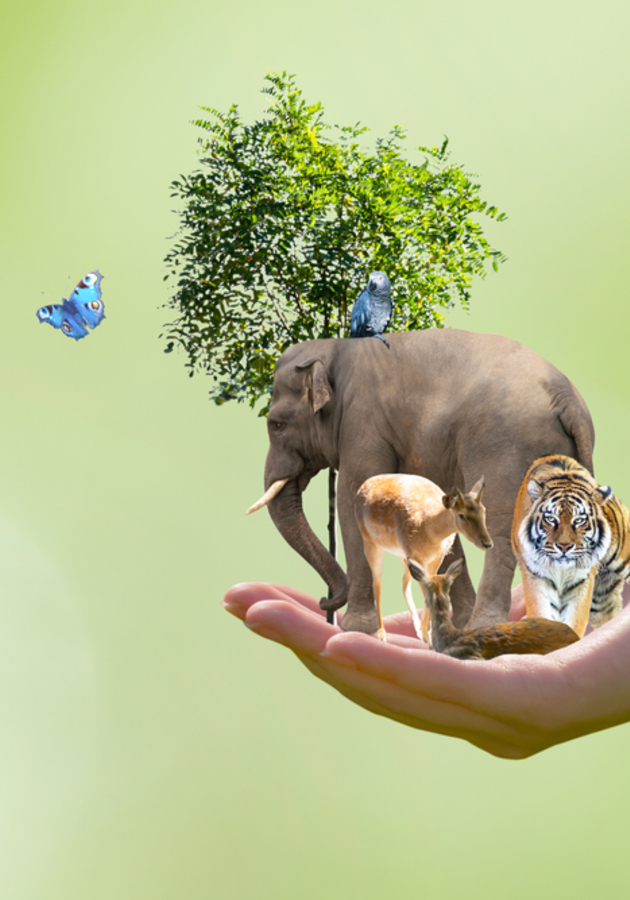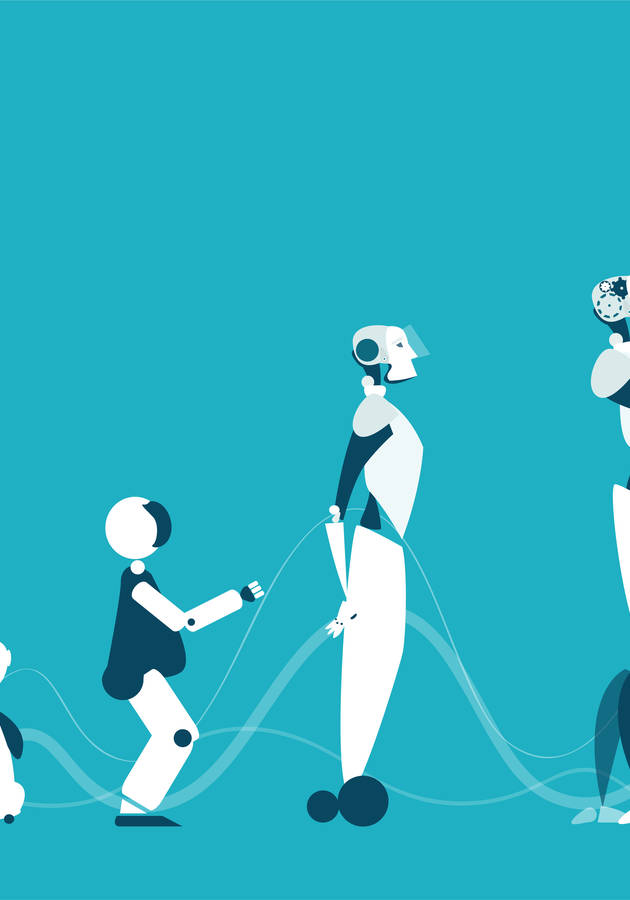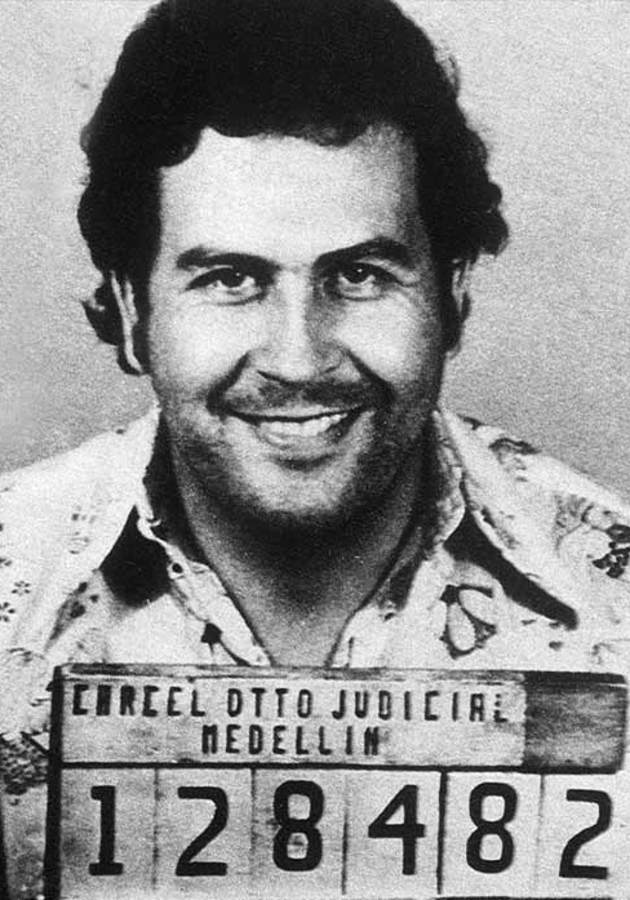British geneticist Paul Nurse has spent most of his adult life trying to understand how living cells work. In 2001, for his contributions to the discovery of protein molecules that regulate the division of cells, he was awarded the Nobel Prize in Physiology or Medicine, which he shared with fellow countryman Tim Hunt and American biologist Leland Hartwell. A firm believer in the idea that scientists should know how to effectively communicate their work, in “What Is Life?,” Nurse tries to illuminate, in beautifully readable language, the five great ideas that underpin biology: the cell, the gene, evolution by natural selection, life as chemistry, and life as information. So, get ready for a historical and scientific walking tour through the complexity of existence!
The cell: biology’s atom
Just like atoms are the basic units of matter, cells are the basic functional units of life; that is to say, the smallest entities that can be described as living. To put this a bit differently and hopefully a bit clearer, “Everything that is alive on the planet is either a cell or made from a collection of cells.” This is the foundation of what biologists call “cell theory.”
However, whereas the idea of indivisible atoms was proposed by Democritus as far back as 400 B.C., the discovery of cells is fairly recent and only goes back to the latter half of the 17th century and an English polymath named Robert Hooke – a man “equally comfortable exploring the frontiers of physics, architecture or biology as he was inventing scientific instruments.” Using a microscope he had built by himself, in 1665, Hooke investigated the structure of a thin slice of cork. He was amazed to discover that it was made up of structures resembling a piece of honeycomb. He named them cells, after the Latin word cella, meaning “a small room” or “cubicle.”
About a decade after Hooke, Dutch researcher Anton van Leeuwenhoek made another fascinating cell-related discovery. Quite proud of his dental hygiene, Leeuwenhoek was shocked to spot under a self-made microscope “some small animals” living in the plaque he had scraped from his teeth. He named them “animalcules,” but the name never stuck. Instead, modern schoolbooks claim that sometime around 1676, Leeuwenhoek became the first man in history to see and describe what we now know to be the most numerous life forms on Earth: bacteria.
As microscopic techniques improved during the 18th century, scientists began identifying cells everywhere. By the second half of the 19th century, they could already be quite sure that “all living organisms are composed of relatively like parts, namely of cells,” and that these cells, in themselves, bear “the complete characteristics of life.” Indeed, as we now know, just like all kinds of animals, plants and fungi, cells too grow, develop, process energy, respond to the environment and procreate. Moreover, in doing all of this, they seem to display a sense of purpose – “an imperative to persist, to stay alive and to reproduce, come what may.”
The gene: the test of time
One of the defining characteristics of all living organisms is the existence of similarities between parents and offspring. This fact had already been recognized by Aristotle in Ancient Greece, but the basic principles of biological heredity would remain a mystery until a 19th-century Abbot of the Brno Monastery in the Czech Republic resolved to carry out, over a course of several years, a string of carefully designed experiments with almost 30,000 pea plants. His name was Gregor Mendel and today he is justly considered the father of modern genetics.
By focusing only on characteristics that displayed clear-cut differences between pea plants – such as plant height or seed color – Mendel discovered that there were predictable patterns in the inheritance of traits from one generation to another. He proposed that these patterns are controlled by “pairs of physical particles” present in each living being that he termed “elements” or “factors” and which we now call “genes.”
The paper where Mendel presented his ideas was largely ignored by the scientific community at the time it was published, but not long after, Belgian embryologist Edouard Van Beneden observed that each newly fertilized embryo of the roundworm contained four “microscopic threads,” having received precisely two from the egg and two from the sperm. We now call these “threads” chromosomes and describe them as long molecules that contain part or all of the genetic material of an organism.
However, it would take decades for humans to understand what genes and chromosomes are or how they might work. The first insight came in 1944 when Canadian-American microbiologist Oswald Avery isolated a substance called deoxyribonucleic acid – DNA, for short – as the material of which genes and chromosomes are made. Even so, most biologists at the time thought DNA “too simple and boring a molecule to be responsible for such a complex phenomenon as heredity.”
That all changed in 1953, when Francis Crick and James Watson correctly interpreted the experimental data gathered by Rosalind Franklin, Raymond Gosling and Maurice Wilkins to deduce the helical structure of DNA. This discovery would eventually help biologists crack “the genetic code.” During the early 1970s, they would determine how genes instruct cells to construct particular proteins, thereby solving one of the key mysteries lying at the heart of biology. The advance seemed so important at the time that many prominent biologists – such as Francis Crick, for example – decided they needed to shift their focus from cells and genes to the mysteries of human consciousness. But science was only warming up.
Evolution by natural selection: chance and necessity
At the time Gregor Mendel was doing his experiments with pea plants, British biologist Charles Darwin was going over the final drafts of, arguably, the most influential book ever written, “On the Origin of Species.” First published on November 24, 1859, the book was the first one to present an insurmountable body of scientific evidence in favor of the fascinating idea that the bewildering diversity of life on Earth arose by common descent through a branching pattern of evolution, and a process Darwin dubbed natural selection.
For natural selection to work, living organisms must have three crucial characteristics. First, they must be able to reproduce. Second, they must have a hereditary system “whereby information defining the characteristics of the organism is copied and inherited during their reproduction.” Third and finally, “This hereditary system must exhibit variability, and this variability must be inherited during the reproductive process.” Additionally, for natural selection to work efficiently, living organisms must also die, for it is through their death that the gene pool receives information to enhance its fitness.
All in all, natural selection is an inevitable fact of life. Even more fascinating than its immense explanatory power is the fact that it took humans so long to notice it, particularly given that they had bred animals based on preferrable traits even before they built the first cities. In fact, Darwin named the process “natural selection” as an explicit hat tip to the “artificial selection” of pigeons by pigeon fanciers. Some of his earliest ideas about evolution can be traced back to him observing the great variety of pigeons produced by humans solely through the selection of particular individuals for breeding.
“Evolution by natural selection can bring about great complexity and the apparent purposefulness of living things,” concludes Nurse. “It does this without any controlling intellect, defined end goal, or ultimate driving force. It sidesteps completely the arguments invoking a divine Creator […] and many others before and since. And it leaves me, for one, in a state of constant wonder.”
Life as chemistry: order from chaos
For centuries, people believed that living organisms were quite different from those that weren’t alive because they could do things. They ascribed this propensity to action to some mysterious forces, simultaneously incorporeal and all-permeating. This way of thinking is called “vitalism” and, in one way or another, has stayed with us to this day. Everyone who believes that, for example, human beings and animals have a “soul” – or some other enigmatic, intangible self – are adherents to some form of vitalism.
As comforting as vitalist explanations might be, the truth is that they have been outdated for quite some time. As Nurse writes, “Most aspects of life can be understood rather well in terms of physics and chemistry, albeit an extraordinary form of chemistry that is highly ordered and organized, and of a sophistication that cannot be matched by any inanimate process.” In many ways, to paraphrase Darwin here a bit, there is an even greater sense of grandeur in evolution than in intelligent design. Just as well, for Nurse, the chemical explanation of life is “more awe-inspiring than any kind of belief that life is directed by mysterious forces that lie beyond the reach of scientific scrutiny.”
For all intents and purposes, modern chemistry began with 18th-century French nobleman and scientist Antoine Lavoisier who, after years of study, concluded that “fermentation was a chemical reaction in which the sugar of the starting grape juice was converted into the ethanol of the finished wine.” Half a century later, with the aid of a microscope, Lavoisier’s compatriot Louis Pasteur discovered that yeast, a living organism, was, in fact, responsible for the conversion of sugar into ethanol.
More importantly, from this specific discovery, Pasteur extricated a fascinating general truth, proposing “that chemical reactions were not just an interesting feature of cellular life – they were one of life’s defining features.” He summarized this view in a beautiful and memorable quote: “Chemical reactions are an expression of the life of the cell.” We now know that he was right and we refer to “the vast array of chemical reactions occurring in living organisms” as metabolism. We also know that metabolism is “the basis of everything living things do: maintenance, growth, organization and reproduction, and the source of all the energy needed to fuel these processes.” As Nurse concludes, metabolism is “the chemistry of life.”
Life as information: working as a whole
South African biologist Sydney Brenner – one of the main contributors to the discovery of the genetic code – once complained that biologists were drowning in data, while still remaining thirsty for knowledge. In other words, Brenner was concerned that biologists spent too much time “recording and describing the details of living chemistry, without always fully understanding what it all means.” Life as information – even life as purpose and meaning – is the final of biology’s five great ideas.
The first person to understand that purposeful behavior was one of the defining features of life was German philosopher Immanuel Kant who proposed, at the end of the 18th century, in his fairly unreadable “Critique of Judgement,” that biology is sometimes also teleology, that is to say, that living beings act as if they have a purpose to fulfill and that they fulfill it by being “organized, cohesive and self-regulating entities in control of their own destiny.” What Kant couldn’t understand – though he tried – was how did they do it.
And really, how do human cells, each of which is “a chemical and physical machine that behaves as a whole,” communicate with each other in such a way to simultaneously work perfectly as a whole and to fulfill each other’s ultimate purpose of staying alive and reproducing? The long answer to this question far surpasses the limits of our current understanding, but the short one is that they have found a way to process information in useful ways. In other words, rather than just being capable of cataloguing the complexity of the world as data, cells are also capable of effectively capturing meaning out of this data.
To this end, they have developed individual information-processing modules that achieve life’s more complex properties by constantly working together. Two simple types of biological modules are the negative and the positive feedback loop, which are used by cells to either maintain a steady state or kickstart growth and development. But that’s only the beginning of the story, which can be summed up thus: many of the things an individual cell does have an impact on many of the things other cells do. By communicating with each other, cells make it possible for them to communicate with the outside environment in better and more complex ways.
“Whichever level of biological organization we look at,” concludes Nurse, “attempts to deepen our comprehension will hinge on our ability to understand how information is managed within them. It is a way to move from describing complexity to understanding complexity. Once we can do this, we can start to see how flitting butterflies, sugar-consuming bacteria, developing embryos and all other life forms make the crucial leap of transforming information into meaningful knowledge that they can use to fulfil their purpose of surviving, growing, reproducing and evolving.”
Final notes
Lauded by Bill Bryson as “a nearly perfect guide to the wonder and complexity of existence,” “What Is Life?” is a rare book, sparklingly clear at the same time as it is breathtakingly profound. We already knew that Paul Nurse would be remembered by future generations as one of the most important biologists of the past century, but with this book – his debut work of this kind – Nurse seems to demonstrate that he might also be thought of someday as one of the great scientific communicators of the current 21st century.
Eloquent and wise, visionary and personal, and at just 160 beautifully written pages, “What Is Life?” can be read in one sitting. Chances are, however, you will think of it long, long after. In fact, we do believe that this book might even stay with you for life. It is that informative, illuminating and inspiring.
12min tip
As far as we know, humans are the only life forms capable of perceiving “the deep connectivity” of all living species and the only life forms equipped with the organs and tools to reflect on what it might all mean. “That,” writes Nurse in the last sentence of his book, “gives us a special responsibility for life on this planet, made up as it is by our relatives, some close, some more distant. We need to care about it, we need to care for it. And to do that we need to understand it.”





























